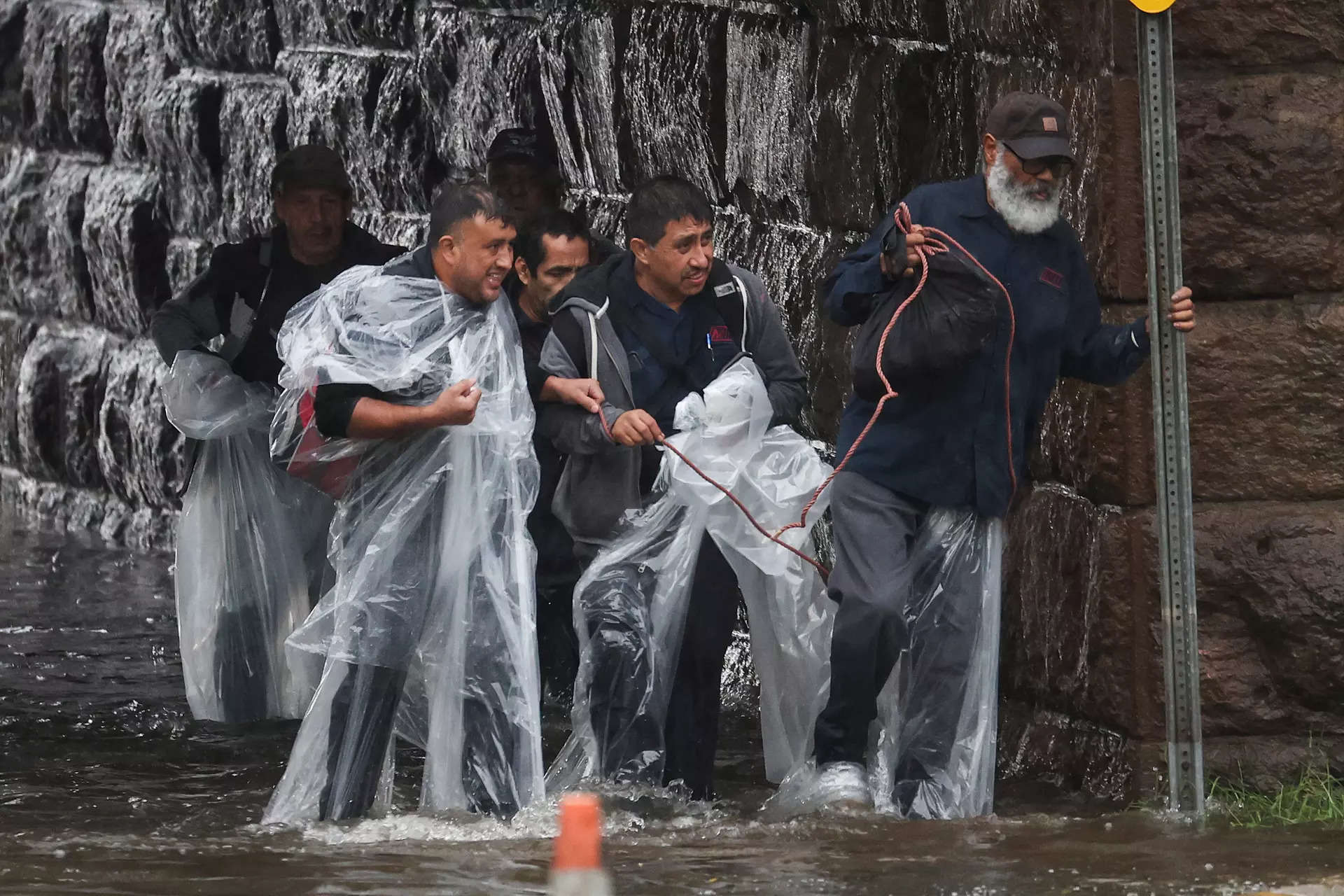Governor Kathy Hochul of New York has issued a stark reminder that the severe floods that recently inundated America’s most populous city are indicative of a ‘new normal,’ a consequence of climate change.
Unprecedented Rainfall Causes Chaos
As Reuters reported on Monday, September 2nd, the rainfall on Friday, September 29th, was recorded at nearly eight inches (20 cm) in some parts of New York City. However, by Saturday afternoon local time, the flood risk in the city had begun to recede, with reports of water receding.
The heavy rainfall was known to have turned several streets in New York City into rivers, causing buses and cars to be stranded for hours. Even subway and commuter rail lines had to be temporarily shut down.
Air transportation was also significantly affected, with many flights at New York airports delayed or canceled. At one point, a terminal at LaGuardia Airport was evacuated due to flooding.
“It’s unfortunate, but it is what we now expect as the ‘new normal,'” stated Governor Hochul in her remarks addressing the flooding in New York City.
Furthermore, Hochul emphasized that the state of emergency in the New York region would remain in effect for the next six days. The declaration of a state of emergency in disaster situations in the United States allows for quicker allocation of resources to manage the crisis.
So far, there have been no reports of casualties due to the severe flooding that engulfed New York.
The ‘New Normal’ of Climate Change
Governor Kathy Hochul’s reference to the floods as the ‘new normal’ highlights the growing impact of climate change on extreme weather events. The increasing frequency and intensity of heavy rainfall and flooding incidents are seen as a consequence of a changing climate.
As the Earth’s climate continues to warm due to human activities such as the burning of fossil fuels and deforestation, it leads to alterations in weather patterns. Warmer air can hold more moisture, resulting in heavier rainfall during storms. This, in turn, increases the risk of flash floods and river flooding, as witnessed in New York.
The ‘new normal’ phrase has been increasingly used to describe the shift in weather patterns and the heightened occurrence of extreme weather events that were once considered rare or abnormal. These events can have far-reaching consequences, impacting infrastructure, transportation, economies, and public safety.
Addressing the Climate Crisis
Governor Hochul’s acknowledgment of the ‘new normal’ serves as a reminder of the urgent need for proactive measures to address the climate crisis. Mitigating the impacts of climate change requires global efforts to reduce greenhouse gas emissions, transition to renewable energy sources, and adapt to the changing climate.
In the United States, discussions on climate policy and investments in resilient infrastructure are crucial steps toward addressing the challenges posed by the ‘new normal.’ Efforts to enhance stormwater management, improve flood defenses, and increase climate resilience are integral components of adapting to this changing reality.
The floods in New York serve as a stark reminder that the consequences of climate change are no longer a distant future but a present-day reality. Urgent action is needed at local, national, and global levels to combat climate change and protect communities from its impacts, making adaptation to the ‘new normal’ a critical priority.
